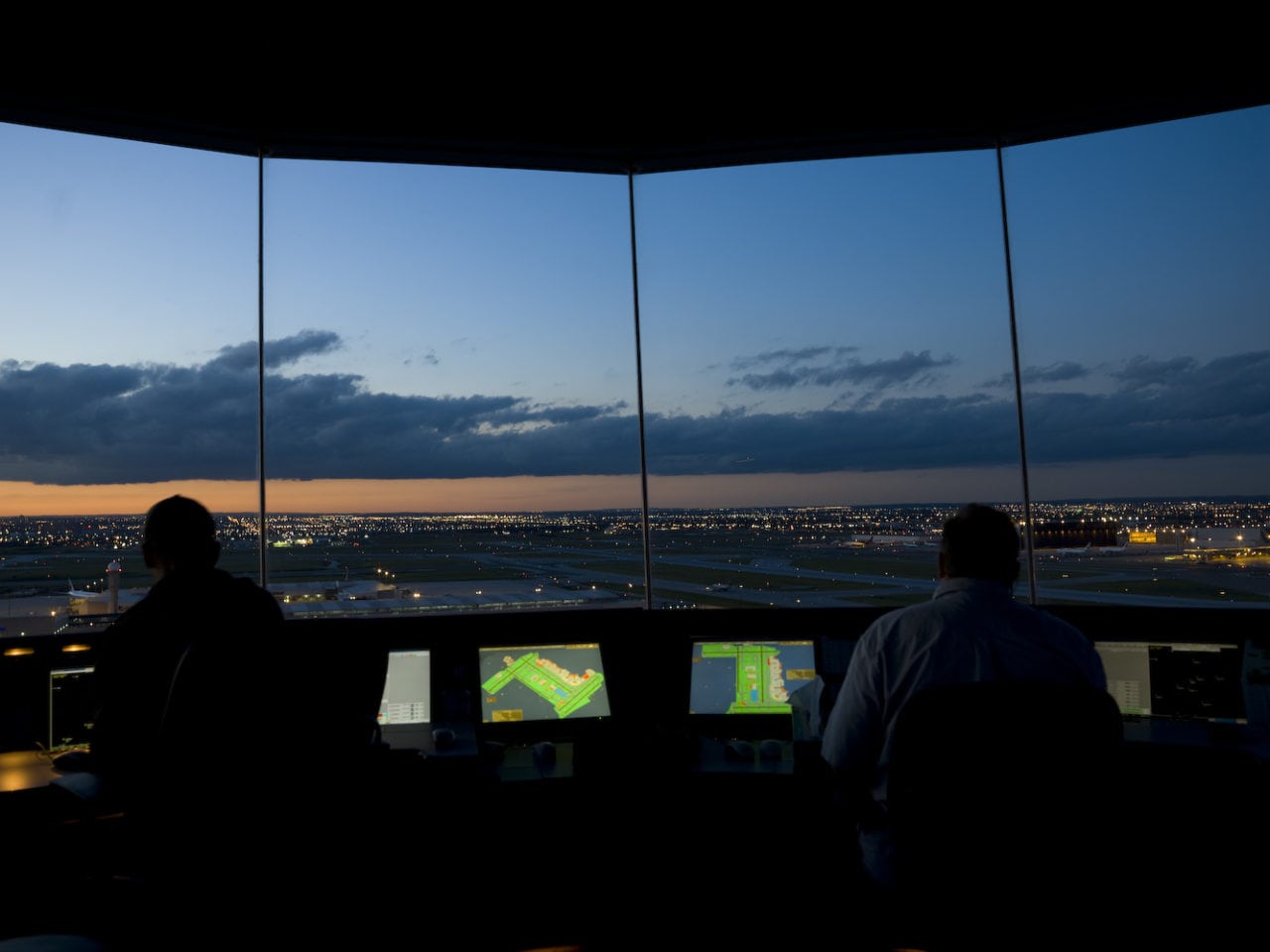[Avionics Today April 17, 2014] The initial launch of Space-based Automatic Dependent Surveillance-Broadcast (ADS-B) is on track for early 2015, with the full 66 satellite constellation network scheduled for full deployment in 2019, said Jeff Cochrane, manager of Communication Navigation Service (CNS) Design for NAV Canada.

Toronto Air Traffic Control tower. Photo, courtesy of Aireon.
Cochrane gave a presentation on Aireon’s ongoing work on the launch of the first global satellite-based Air Traffic Management (ATM) surveillance system. Ironically, Cochrane gave a presentation at the 2014 AMC/AEEC conference on the launch of Space-based ADS-B in 2015, just a day after the Federal Aviation Administration (FAA) announced the implementation of the full ground-based infrastructure for the ADS-B network in the U.S.
With all of the press coverage, theories and speculation about the disappearance of Malaysia Airlines’ Flight MH370, the plans to start operational trials of space-based ADS-B in 2015 shows that the industry is already working on innovative technology to improve aircraft tracking.
Aireon, a joint venture between Iridium and NAV Canada, recently added more agencies to its list of Air Navigation Service Providers (ANSP), including NAV Portugal in March, as it looks to engage more stakeholders in the busy airspace between Europe and North America.
According to Cochrane, the initial launch will focus on the North Atlantic oceanic airspace, which is among the busiest in the world. The NAV Canada manager said that the space-based network will be compatible with existing ADS-B Out equipped solutions as well.
“Space based is not targeted at doing things like the North American East Coast and dense metroplex areas. This is intended for the slightly less dense traffic areas, oceanic and remote as the initial portion. So we really see this as an opportunity for both innovation and environmental savings worldwide,” Cochrane added.
The NAV Canada manager said that the space-based network will be compatible with existing ADS-B Out equipped solutions as well.
“The system will be able to track aircraft with any standard ADS-B Out version (DO260, 260A or 260B) that includes a top mounted antenna with a minimum power output of 125. The top and bottom mounted transponder antenna is a standard fit for any aircraft that operates TCAS [Traffic Collision Avoidance Systems],” said Cochrane.